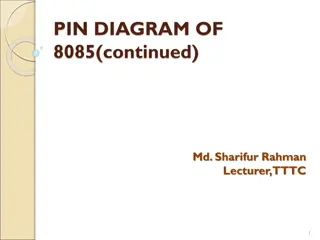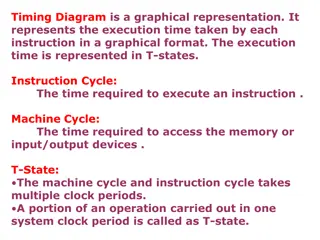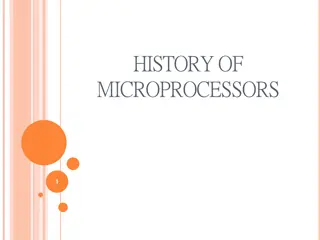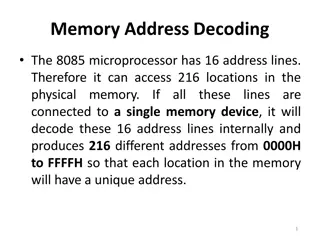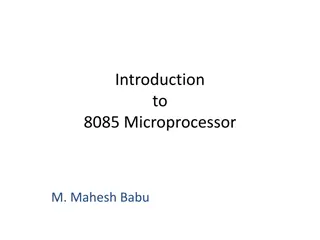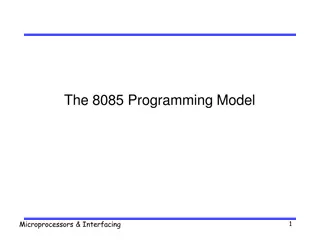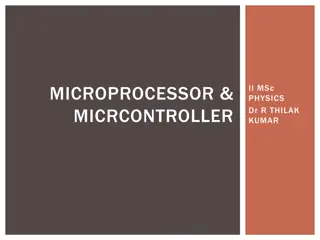Comprehensive Guide to 8085 Microprocessor Interrupts and Pin Diagram
Explore the PIN diagram of the 8085 microprocessor, understand interrupts, including hardware interrupts like TRAP, RST, INTR, and the classification of interrupts such as maskable, non-maskable, vectored, and more. Learn about the sequence of steps during interrupts and their significance in microp
12 views • 31 slides
Understanding Timing Diagrams and Machine Cycles in Microprocessors
Timing diagrams provide a visual representation of execution times for instructions in a microprocessor, measured in T-states. This content delves into the concept of machine cycles, such as Opcode fetch cycle and Memory read cycle, in 8085 microprocessors. Exploring the T-states within each cycle,
0 views • 27 slides
Evolution of Microprocessors: A Historical Overview
The history of microprocessors traces back to Fairchild Semiconductors in 1959, leading to the founding of Intel in 1968. The evolution from 4-bit to 64-bit microprocessors by Intel revolutionized computing. Key milestones include the Intel 4004 and 4040 (4-bit), 8008, 8080, and 8085 (8-bit), and th
2 views • 44 slides
Understanding Processor Cycles and Machine Cycles in 8085 Microprocessor
Processor cycles in microprocessors like 8085 involve executing instructions through machine cycles that are essential operations performed by the processor. In the 8085 microprocessor, there are seven basic machine cycles, each serving a specific purpose such as fetching opcodes, reading from memor
0 views • 17 slides
Memory Address Decoding in 8085 Microprocessor
The 8085 microprocessor with 16 address lines can access 216 locations in physical memory. Utilizing a 74LS138 address decoder, chip select signals are generated for memory block selection. The interfacing involves decoding address lines to enable memory access, with distinctions between RAM and ROM
0 views • 18 slides
Overview of 8085 Microprocessor Architecture
Intel 8085 microprocessor, introduced in 1977 as an 8-bit MP with 40-pin dual-in-line chip, operates on a single +5V supply at a clock speed of about 3MHz. It features 16-bit address bus capable of addressing up to 64KB memory, N-MOS technology, multiplexed data and address buses, interrupt support,
0 views • 52 slides
Understanding the 8085 Microprocessor Programming Model
The 8085 microprocessor, made by Intel, features general purpose registers, an accumulator, flag register, stack pointer, and program counter. The programming model includes ALU operation, flag flip-flops, and different instruction formats and operand types for executing tasks efficiently.
0 views • 13 slides
Understanding 8085 Microprocessor Architecture
The 8085 microprocessor architecture involves key components like register array, ALU, program counter, stack pointer, address latch, and more. Learn about the functionality and importance of each unit in data manipulation and communication. Dive into the details of general-purpose registers, data s
1 views • 17 slides
